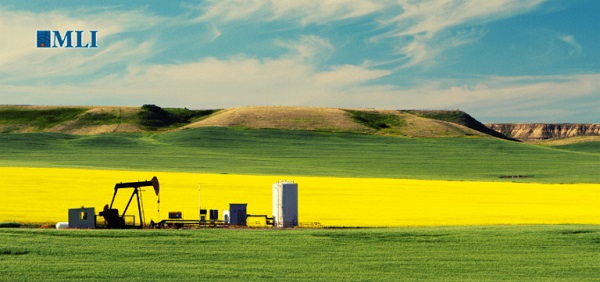Alberta
With $15 a day flat rate, Alberta transitions to publicly funded child care

Introducing $15 a day child care for families
Alberta is introducing a flat monthly parent fee of $326.25 for full-time licensed child care, or roughly $15 a day.
As part of the $3.8-billion Canada-Alberta Canada-Wide Early Learning and Child Care Agreement, Alberta is supporting families to access affordable child care across the province with their choice in provider.
Starting Apr. 1, parents with children zero to kindergarten age attending full-time licensed daycare facilities and family day home programs across the province will be eligible for a flat parent fee of $326.25 per month, or roughly $15 a day. Parents requiring part-time care will pay $230 per month.
To support these changes and high-quality child care, about 85 per cent of licensed daycare providers will receive a funding increase once the new fee structure is in place on Apr. 1.
Every day, parents and families across Alberta rely on licensed child-care providers to support their children’s growth and development while going to work or school. Licensed child-care providers and early childhood educators play a crucial role in helping children build the skills they need to support their growth and overall health. As Alberta’s population grows, the need for high-quality, affordable and accessible licensed and regulated child care is increasing.
While Alberta already reduced parent fees to an average of $15 a day in January 2024, many families are still paying much more depending on where they live, the age of their child and the child-care provider they choose, which has led to inconsistency and confusion. Many families find it difficult to estimate their child-care fees if they move or switch providers, and providers have expressed concerns about the fairness and complexity of the current funding framework.
A flat monthly fee will provide transparency and predictability for families in every part of the province while also improving fairness to providers and increasing overall system efficiency. On behalf of families, Alberta’s government will cover about 80 per cent of child-care fees through grants to daycare facilities and family day homes.
This means a family using full-time daycare could save, on average, $11,000 per child per year. A flat monthly parent fee will ensure child care is affordable for everyone and that providers are compensated for the important services they offer.
As opposed to a flat monthly parent fee, Alberta’s government will reimburse preschools up to $100 per month per child on parents’ behalf, up from $75.
“Albertans deserve affordable child-care options, no matter where they are or which type of care works best for them. We are bringing in flat parent fees for families so they can all access high-quality child care for the same affordable, predictable fee.”
“Reducing child care fees makes life more affordable for families and gives them the freedom to make choices that work for them—whether that’s working, studying or growing their family. We’ll keep working to bring costs down, create more spots, and reduce waitlists for families in Alberta and across the country, while ensuring every child gets the best start in life.”
To make Alberta’s child-care system affordable for all families, the flat monthly parent fee is replacing the Child Care Subsidy Program for children zero to kindergarten age attending child care during regular school hours. The subsidy for children attending out-of-school care is not changing.
As the province transitions to the new flat parent fee, child-care providers will have flexibility to offer optional services for an additional supplemental parent fee. These optional services must be over and above the services that are provided to all children in individual child-care programs. Clear requirements will be in place for providers to prevent preferential child-care access for families choosing to pay for optional services.
Cutting red tape and supporting child-care providers
By moving to a flat monthly parent fee, Alberta’s government is continuing the transition to a primarily publicly funded child care system. To support high-quality child care, approximately 85 per cent of licensed daycare providers will receive a funding increase once the new structure is in place on Apr. 1.
The province is enhancing the system to streamline the child-care claims process used to reimburse licensed child-care providers on behalf of Alberta parents. Alberta’s government is also putting technological solutions in place to reduce administrative burden and red tape.
Looking ahead
Over the final year of the federal agreement, Alberta’s government is working to support the child-care system while preparing to negotiate the next term of the agreement, reflective of the needs of Albertans and providers. Alberta joins its provincial and territorial partners across the country in calling for a sustainable, adequately funded system that works for parents and providers long term.
Quick facts
- In line with requirements under the Canada-Alberta Canada-Wide Early Learning and Child Care Agreement, the flat monthly parent fee only applies to children zero to kindergarten age requiring care during regular school hours.
- Children attending 100 or more hours in a month are considered full-time and parents will pay $326.25 a month. Children attending between 50 and 99 hours are considered part-time and parents will pay $230 a month.
- Families with children attending preschool for up to four hours a day are eligible for up to $100 per month.
- There are no changes to the out-of-school care Child Care Subsidy Program for children requiring care outside of school hours in grades 1 to 6 and attending full-time kindergarten.
- Programs may choose to provide optional services for a supplemental fee. Examples may include transportation, field trips and food. Child-care programs are not required to charge parents additional supplemental fees.
Related information
Alberta
Big win for Alberta and Canada: Statement from Premier Smith

Premier Danielle Smith issued the following statement on the April 2, 2025 U.S. tariff announcement:
“Today was an important win for Canada and Alberta, as it appears the United States has decided to uphold the majority of the free trade agreement (CUSMA) between our two nations. It also appears this will continue to be the case until after the Canadian federal election has concluded and the newly elected Canadian government is able to renegotiate CUSMA with the U.S. administration.
“This is precisely what I have been advocating for from the U.S. administration for months.
“It means that the majority of goods sold into the United States from Canada will have no tariffs applied to them, including zero per cent tariffs on energy, minerals, agricultural products, uranium, seafood, potash and host of other Canadian goods.
“There is still work to be done, of course. Unfortunately, tariffs previously announced by the United States on Canadian automobiles, steel and aluminum have not been removed. The efforts of premiers and the federal government should therefore shift towards removing or significantly reducing these remaining tariffs as we go forward and ensuring affected workers across Canada are generously supported until the situation is resolved.
“I again call on all involved in our national advocacy efforts to focus on diplomacy and persuasion while avoiding unnecessary escalation. Clearly, this strategy has been the most effective to this point.
“As it appears the worst of this tariff dispute is behind us (though there is still work to be done), it is my sincere hope that we, as Canadians, can abandon the disastrous policies that have made Canada vulnerable to and overly dependent on the United States, fast-track national resource corridors, get out of the way of provincial resource development and turn our country into an independent economic juggernaut and energy superpower.”
Alberta
Energy sector will fuel Alberta economy and Canada’s exports for many years to come

From the Fraser Institute
By any measure, Alberta is an energy powerhouse—within Canada, but also on a global scale. In 2023, it produced 85 per cent of Canada’s oil and three-fifths of the country’s natural gas. Most of Canada’s oil reserves are in Alberta, along with a majority of natural gas reserves. Alberta is the beating heart of the Canadian energy economy. And energy, in turn, accounts for one-quarter of Canada’s international exports.
Consider some key facts about the province’s energy landscape, as noted in the Alberta Energy Regulator’s (AER) 2023 annual report. Oil and natural gas production continued to rise (on a volume basis) in 2023, on the heels of steady increases over the preceding half decade. However, the dollar value of Alberta’s oil and gas production fell in 2023, as the surging prices recorded in 2022 following Russia’s invasion of Ukraine retreated. Capital spending in the province’s energy sector reached $30 billion in 2023, making it the leading driver of private-sector investment. And completion of the Trans Mountain pipeline expansion project has opened new offshore export avenues for Canada’s oil industry and should boost Alberta’s energy production and exports going forward.
In a world striving to address climate change, Alberta’s hydrocarbon-heavy energy sector faces challenges. At some point, the world may start to consume less oil and, later, less natural gas (in absolute terms). But such “peak” consumption hasn’t arrived yet, nor does it appear imminent. While the demand for certain refined petroleum products is trending down in some advanced economies, particularly in Europe, we should take a broader global perspective when assessing energy demand and supply trends.
Looking at the worldwide picture, Goldman Sachs’ 2024 global energy forecast predicts that “oil usage will increase through 2034” thanks to strong demand in emerging markets and growing production of petrochemicals that depend on oil as the principal feedstock. Global demand for natural gas (including LNG) will also continue to increase, particularly since natural gas is the least carbon-intensive fossil fuel and more of it is being traded in the form of liquefied natural gas (LNG).
Against this backdrop, there are reasons to be optimistic about the prospects for Alberta’s energy sector, particularly if the federal government dials back some of the economically destructive energy and climate policies adopted by the last government. According to the AER’s “base case” forecast, overall energy output will expand over the next 10 years. Oilsands output is projected to grow modestly; natural gas production will also rise, in part due to greater demand for Alberta’s upstream gas from LNG operators in British Columbia.
The AER’s forecast also points to a positive trajectory for capital spending across the province’s energy sector. The agency sees annual investment rising from almost $30 billion to $40 billion by 2033. Most of this takes place in the oil and gas industry, but “emerging” energy resources and projects aimed at climate mitigation are expected to represent a bigger slice of energy-related capital spending going forward.
Like many other oil and gas producing jurisdictions, Alberta must navigate the bumpy journey to a lower-carbon future. But the world is set to remain dependent on fossil fuels for decades to come. This suggests the energy sector will continue to underpin not only the Alberta economy but also Canada’s export portfolio for the foreseeable future.
-

 2025 Federal Election2 days ago
2025 Federal Election2 days agoMark Carney refuses to clarify 2022 remarks accusing the Freedom Convoy of ‘sedition’
-

 Business2 days ago
Business2 days agoSaskatchewan becomes first Canadian province to fully eliminate carbon tax
-

 2025 Federal Election2 days ago
2025 Federal Election2 days agoLiberal MP Paul Chiang Resigns Without Naming the Real Threat—The CCP
-

 2025 Federal Election2 days ago
2025 Federal Election2 days agoPM Carney’s Candidate Paul Chiang Steps Down After RCMP Confirms Probe Into “Bounty” Comments
-

 Alberta1 day ago
Alberta1 day agoOwner sells gas for 80 cents per litre to show Albertans how low prices ‘could’ be
-

 International1 day ago
International1 day agoTrump’s ‘Golden Dome’ defense shield must be built now, Lt. Gen. warns
-

 Automotive2 days ago
Automotive2 days agoElectric cars just another poor climate policy
-

 Energy2 days ago
Energy2 days agoWhy are Western Canadian oil prices so strong?






